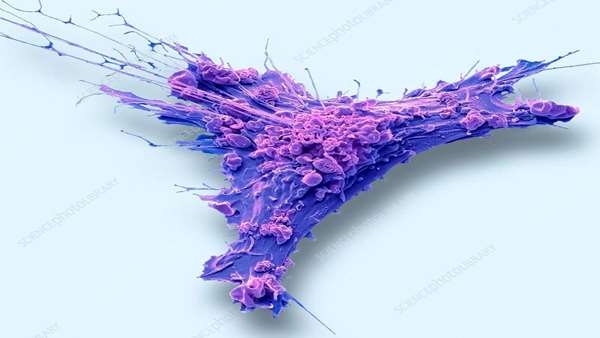New insights into wound healing
The team, led by Delaram Shakiba, a postdoctoral fellow from the NSF Science and Technology Center for Engineering Mechanobiology (CEMB) at the McKelvey School of Engineering, discovered the way fibroblasts, or common cells in connective tissue, interact with the extracellular matrix, which provides structural support as well as biochemical and biomechanical cues to cells.
The team, led by Delaram Shakiba, a postdoctoral fellow from the NSF Science and Technology Center for Engineering Mechanobiology (CEMB) at the McKelvey School of Engineering, discovered the way fibroblasts, or common cells in connective tissue, interact with the extracellular matrix, which provides structural support as well as biochemical and biomechanical cues to cells. The team uncovered a recursive process that goes on between the cells and their environment as well as structures in the cells that were previously unknown.
Results of the research were published in ACS Nano on July 28. Senior authors on the paper are Guy Genin, the Harold and Kathleen Faught Professor of Mechanical Engineering at the McKelvey School of Engineering, and Elliot Elson, professor emeritus of biochemistry and molecular biophysics at the School of Medicine.
"Clinical efforts to prevent the progression of fibrocontractile diseases, such as scarring and fibrosis, have been largely unsuccessful, in part because the mechanisms that cells use to interact with the protein fibers around them are unclear," Shakiba said. "We found that fibroblasts use completely different mechanisms in the early -- and I think the most treatable -- stages of these interactions, and that their responses to drugs can therefore be the opposite of what they would be in the later stages."
Genin, who is the co-director of the CEMB, said the process has stymied mechanobiology researchers for some time.
"Researchers in the field of mechanobiology thought that cells pulled in collagen from the extracellular matrix by reaching out with long protrusions, grabbing it and pulling it back," Genin said. "We discovered that this wasn't the case. A cell has to push its way out through collagen first, then instead of grabbing on, it essentially shoots tiny hairs, or filopodia, out of the sides of its arms, pulls in collagen that way, then retracts."
Now that they understand this process, Genin said, they can control the shape that a cell takes.
Reference:https://www.sciencedaily.com/releases/2020/07/200729124355.htm




ارسال به دوستان